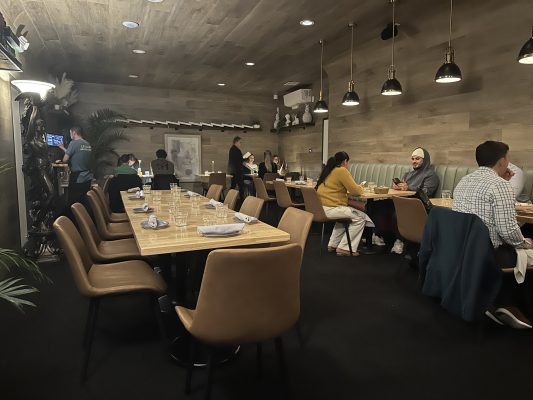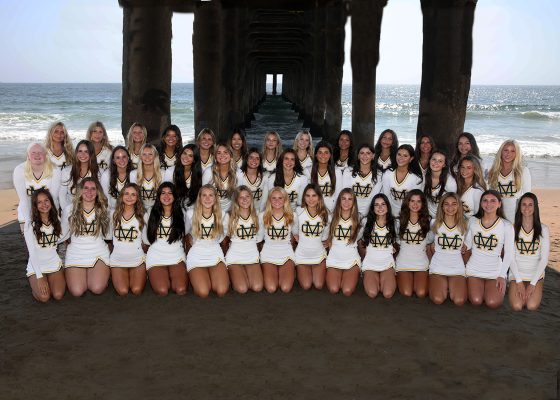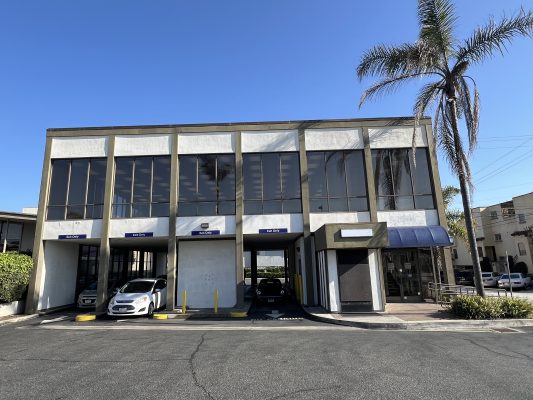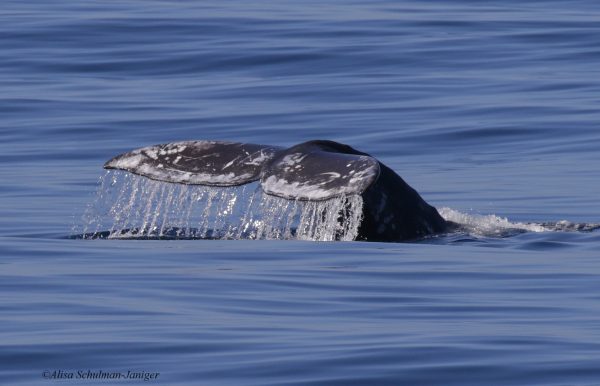
Through the first half of the 20th Century, Californians enjoyed the Pacific Ocean almost exclusively from the comfort of land or boats. Divers and surfers were notable exceptions, but their numbers were in the hundreds. Even in Southern California, the ocean is almost always too cold and the waves too violent for the uninitiated.
Among the small, tightly intermingled tribes of California surfers and divers at the century’s mid-way point were Missouri-transplant Bill and Bob Meistrell. In 1953, the Meistrell twins acquired half interest in a one-year-old dive and surf shop, aptly called Dive ‘N Surf. The shop, on the Redondo waterfront next to the Fox movie theater, was founded by two of the twins’ watermen buddies Bev Morgan and Hap Jacobs.

This year, on Dive ‘N Surf’s 50th anniversary, California divers and surfers number in the millions. Californians who ocean swim, body surf, Boogie board, or simply duck under and jump over waves every year number in the tens of millions.
If there had never been a Dive ‘N Surf, the Pacific Ocean would still, one day, have become the state’s most popular recreation destination. But it wouldn’t have happened when it did. And it wouldn’t have begun in Redondo Beach, where coincidentally, in the 1907, Hawaiian surf George Freeth introduced Hawaii’s “sport of kings” to California.
Certainly other, more brilliant men contributed to the 1950s explosion in the popularity of ocean sports. Jacques Cousteau’s invention of the SCUBA tank in 1943 freed divers of the need for metal helmets tethered to an air pump. Cal Tech student Bob Simmons’ Styrofoam and plywood “sandwich” boards in the late 1940s foretold the mass production of light, affordable, polyurethane surfboards in the 1950s. Churchill swim fins designed in the 1936 by Owen Churchill of Redondo, following a trip to Tahiti where he saw divers wearing palm frond flipper, made weak swimmers strong swimmers, and enabled strong swimmers able to challenge large surf. Tom Morey’s invention of the Boogie board in 1974 extended the joy of wave riding to non swimming adults and small children.
But none of these developments could have experienced popular acceptance without someone first finding a way for people playing in the ocean to stay warm.

Ocean temperatures in California rarely rise above 70 degrees and often fall below 60. Hypothermia charts show that in 60 to 70 degree water, severe chills begins within 15 to 30 minutes, followed by unconsciousness within one to two hours.
The Meistrell twins, like other post World War II divers and surfers, experimented with various materials and methods to delay the onset of hypothermia, ranging from wool sweaters and battery heated, pilot “bunny suits,” to fires on the beach.
Finally, one day in 1953, Morgan and the Meistreills solved the problem with the introduction of a wetsuit they called the Dive ‘N Surf Thermocline.
What set the Dive ‘N Surf wetsuit apart from the latex covered canvas favored by hard hat divers and the latex frogman suit popular with SCUBA divers was its use of closed-cell neoprene rubber.
Neoprene had been developed by Rubatex, a Bedford Virginia company, for refrigerator insulation and taillight gaskets. The product was sold in California by American Latex in Gardena, where Bill Meistrell first spotted it.
Neoprene possessed two qualities that other rubbers didn’t. Its thousands of tiny air cells retained body heat, and perhaps more importantly, kept its wearers afloat.
Today’s incandescent, accessory laden wetsuits worn by lobster divers, aerial surfers, triathletes and squealing Boogie boarders are essentially the same neoprene suit as the Dive ‘N Surf Thermocline.
The Meistrell twins would be the last to suggest that they alone could have opened the oceans to the masses. But if not uniquely chosen for the job, they were certainly as prepared as anyone else, anyplace else on this blue planet to get it done.

Bill and Bob Meistrell were born in 1928 in Boonsville Missouri, population 13,000. Bill came out shortly before midnight and Bob shortly after midnight, which explains their different birthdays.
The twins, older brothers John and Joe and sisters Fran, Marianne and Judy were raised alone by their mom Mary from the time the twins were fours-years-old. That year, their dad was shot to death in his office vault by a former business partner over a dispute about the partner’s delinquent mortgages. The murderer fled to Cincinnati, where three days later, according to his wife, he committed suicide, and that same day was cremated. Bill and Bob grew up believing that the man and his wife faked his death and escaped to Mexico.
In spite of Boonsville being as far from any ocean as a person can get while still living in the continental US, the teenage twins developed a fascination with deep sea diving.
At least initially, the twin’s newest interest must have been a relief to their mother because it didn’t involve guns. One afternoon, while their mother was on a shopping trip to Kent, 100 miles away, the boys went down to the river to shoot bottles.
“Our mother said we couldn’t go hunting while she was away, but she didn’t say anything about target practice. I threw a bottle out over the river and my cousin shot at it and the bullet went through my bicep. I said, “You got me, Frank,’ just like in a western,” Bob said.
Rather than face their mother’s wrath, the twins walked three miles to the nearest hospital. The doctor told Bob that the bullet narrowly missed a nerve that would have cost him the use of his arm.
The following night, after ice skating on the town lake with his sisters and cousins, Bill found himself dodging bullets that the careless shooting cousin had tossed into their campfire.
The family home was on a hill overlooking the municipal pool, which enabled the twins’ mother to keep an eye on them while from the kitchen window. Brother John was a lifeguard at the pool.
“We joined the Boy Scouts so we could compete in the annual swim meet. After the meet we’d quit,” Bob said.
Pool passes were $10 and meant to last a summer. But the twins used up their punch cards after only a few days and their mother couldn’t afford to keep buying more. So the pool supervisor allowed them to swim for free in exchange for draining and scrubbing the pool each week.
The time was 1941. The twins were 13, the national guard was training in town with wooden rifles.
“We read about Navy hard hat divers, who became heroes when the Germans started sinking ships. They wore latex-covered canvas suits and a metal helmet bolted to a breastplate with an air hose attached to a pump on the ship,” Bill recalled.
“So we got a five gallon vegetable oil can from mom’s mercantile store and cut holes in the front and bottom. Then we pulled up tar from the street in front of our house and chewed it to soften it and seal the glass faceplate because we didn’t have silicone. We soldered a hose fitting to the top and fit it with a spring and a marble that worked like a check way valve so the air wouldn’t go back out when we stopped pumping. I don’t know how we knew we would need a valve. It just seemed like the thing to do,” Bob recalled.
They took their dive helmet, a garden hose, a bike pump and some lead weights from their mother’s store to the municipal swimming pool.
“One of us would sit on the bottom of the pool and read library books while the other worked the bicycle pump. We also marched around the bottoms of different lakes in the area. Our mom built us a lake on our property,” Bill recalled. “I don’t know why we didn’t get air embolisms,” he added.
At the start of World War II, their brother John, who was 4F because of deafness in one ear, moved to Manhattan Beach to work in the aircraft industry. In 1944, the twins followed with their sisters and mom. They twins brought their dive helmet and dreams of sunken treasure with them.

The sunken treasure dream would come true in 1996 when they participated in the recovery of $10 million in gold coins from the civil war era side wheeler “Brother Jonathan” off the coast of Crescent City. The homemade dive helmet, and with it a piece of diving history, went into the trash after the now 15-year-old boys found a blue, barely used dive helmet with a double piston pump, 50 feet of hose and shoe weights, all for $24.
“Mom asked why it was so cheap. It was because the guy who owned it drowned,” Bob said.
“We marched all around the breakwall with that thing, but could only do one dive a day because we’d come up with our eyes and ear bleeding. We could never get below 10 or 15 feet because our ears hurt so much,” said Bill
No one told them of the need to clear their ears because atmospheric pressure on a diver’s eardrums increases three pounds every six feet.
The Boonsville twins adjusted easily to life in Manhattan Beach, where they lived with their mother’s sister. Both took up surfing and played football at El Segundo high, despite being only 5-foot 7 and weighing 128 pounds.
“I got the fastest letter in football history. I made a tackle on the first play of the season and crushed a vertebrae. I walked off the field and the coach was about to send me back in when I fainted in the sawdust pit.”
After high school the two passed the lifeguard run-swim-run test, becoming the smallest lifeguards in the department’s history.
When the Korean War broke out and Bill was drafted. Bob assumed his broken back would earn him a deferment and made plans to go to Hawaii with surfboard builder Dale Velzy. Velzy was counting on a deferment for “housemaid knees.” Before his Army physical, he crawled around on his knees until they bled.
“I went to see Dale, who was living with his mother in an apartment over the Hermosa mortuary on Pier Ave. He had a quart of milk in one hand and a paper in the other hand. He said we weren’t going to Hawaii. The paper was his draft notice,” Bob said.
Bob’s draft notice followed. He was sent to Fort Ord in northern California with 80 fellow bad back sufferers, including two who rode rodeo bulls on weekends. Bob lived on Pleasure Point in Santa Cruz and spent his evenings and weekends surfing the icy, but well shaped waves.

“We were crazy sons of a gun. I can still feel the chill in my bones when I think about it. All we had were those wool, Army sweaters to keep us warm. I’d take it off and wring it out every time I fell off my board. We’d last for three or four waves, then run to our cars and turn the heater on, and then give it another go. People thought we were nuts. They practically moved to the others side of the street when we walked by with our boards,” Bob said.
Significantly, Bob added, though he thought he knew every surfer in the area, he never ran into Jack O’ Neil, the founder of O’Neil Wetsuits. O’Neil claims to have invented the neoprene wetsuit in 1952, one year before the Dive N’ Surf wet suit was introduced.
Bill, meanwhile, in the hopes of avoiding assignment to a rifle company, volunteered for what he thought was “heavy motors.” He spent the next 10 months with a heavy mortar company on the front lines, where he earned a Bronze medal for stopping his commanding officer from stepping on a booby trap.
But even in Korea, Bill found an opportunity to get in the water.
“I was in Pusan on R and R and was walking down the beach when I saw a guy in a high chair. I thought, this can’t be true. I asked the guy if they needed more lifeguards, and said, ‘If you’re looking, I’m your man.’ The guy had been a lifeguard on Coney Island. He told me to swim out to some black thing out in the water. So I beat the water to a froth and when I got back, he said you’re a good swimmer. Then he asked me what the black thing was. It was a rock. He said they’d been watching it for three days and thought it was a shark,” Bill said.
“I sent Bill a letter telling him I was getting my orders changed so I could come over and join him. He sent me a letter back saying don’t do it, the surf’s not that good,” Bob said.
After the war the brothers returned home to lifeguarding, surfing and diving.
Lifeguarding paid $75 a month. To supplement his income, Bob cleaned floors every evening at Pancho’s restaurant, Joe’s Candy Cottage, Bentley’s men’s shop, his brother Mr. Johnny’s Manhattan Five and Dime and his sister Fran’s dress shop, Lee’s Fashions.
Bill made plans with Velzy to open a dive shop in Topanga.
“We had a 14-foot Chris Craft and we’d dive for lobster or spear halibut every morning. I was surfing an old Joe Quigg board, and Bill had his Simmons “slot” board,” Bob said.
The Simmon was a crudely hewn, twin fin, balsa board with slots carved in the side so the board would plane like a modern short board. The brothers disagree over whether it is the only one left in existence. Bill says it is. Bob said he knows someone who has another one. In either case, it is the precursor of the modern surfboard and a priceless piece of surfing history.

During this period lobster poaching was considered a legitimate way for watermen to supplement their diets and income. One evening a neighbor, an old fish and game warden, invited Bob to dinner. Bob brought along a fresh lobster.
“He said to me, ‘Bob, do you ever poach?’ I said, ‘Yea.’
“When I got out of the army, I didn’t have any money and I was probably the biggest poacher of them all. There were so many abalone and lobster then that we didn’t think it mattered.
“He said he appreciated my honesty and that he could give me a ticket right then, but he’d rather give me a talking to. I said I’d rather pay the fine, but he gave me a talking to anyway. He said if everyone poached like I did there wouldn’t be any game left for my grandchildren. And boy, was he right. We never dreamed the abalone would disappear and now they’re almost extinct in Southern California. I never took illegal game again in my life.”
Also, during this period, the brothers purchased their first dive tank and regulator for $125 from fellow lifeguard Frank Rodecker, who sold them out of his car trunk.
“On our first dive we went with [future Hermosa city councilman] Jack Wise to salvage a landing barge that had sunk in the harbor. But we couldn’t dive deep enough to reach it,” Bob said.
The only instruction Rodecker had given them about the new dive gear was not to hold their breath on the way up. The brothers still didn’t know about equalizing the pressure on their ears on the way down.
Other pioneer divers were even less fortunate.
“During the war the Navy divers used oxygen re-breathers because they didn’t emit bubbles that would give away their location. After the war, recreation divers bought them from war surplus stores. If you breath pure oxygen below 30 feet, you die from oxygen poisoning. But a lot of people didn’t know that, so a lot of peopled drowned. In the mid-50s we got the state to ban war surplus stores from selling them,” Bob said.
Pilot “bunny suits” were another war surplus item that divers tried, with life threatening results. The suits were threaded with wires that plugged into a battery to keep the pilots warm.
“We put one on Jack and almost electrocuted him when he hit the water,” Bob said.
Despite the beach cities’ post war picture as a waterman’s paradise, life wasn’t without the usual relationship problems. While Bill was in Korea, the twins’ prewar surfing buddy Bev Morgan married Bill’s fiancé. And almost as bad, he borrowed Bob’s Quigg surfboard without asking permission.

One evening Rodecker told Bill that Morgan wanted to meet him at his dive shop.
“The night before I had gone to Lorraine’s house to get my car and my engagement ring back, and her mother had seen me. So I thought Bev wanted to punch me out,” Bill said.
Instead, Bev asked Bill if he wanted to buy out Jacobs’ share in the shop. Jacobs planned to open a surfboard shop with Velzy.
Bill told Morgan he would only consider a partnership if it included his brother Bob. Morgan said he didn’t like three-way partnerships, but subsequently agreed to the arrangement. The brothers borrowed $1,800 from their mother to buy out Jacobs.
“My first day I sold a dive magazine for 15 cents and lost 10 cents on the deal. It was supposed to be a quarter. That night my mom asked if we were sure the shop was a good investment,” Bob said.
“I had weight belts that I made, stacked up four feet high. I’d dive for fishing weights off the pier pilings and use a blowtorch to melt them into a cavity mold. Then I put the weights on a nylon belt with a clasp. I didn’t think we’d ever sell them all,” Bob said.
“Then one day I sold a faceplate, a snorkel and some air cylinders for $100 and thought, this is a nice income for three guys, as long as we keep our lifeguarding jobs.”

After the twins bought in to Dive N’ Surf, they began helping Morgan make “beaver tail” suits from 24-wide lengths of latex rubber. Bill quickly earned a reputation as a master wetsuit tailor.
“We’d glue the edges of two sheets together and cut holes in the side and top for arms and legs,” Bill said. The beaver tail name came from the flap that passed from the back, up under the legs to snaps on the front panel.
One day, on a rubber buying trip to American Latex in Gardena, Bill spotted sheets of a new material called N231. The N stood for neoprene.
Word of the Meistrell’s warm, new wetsuits somehow reached the captain of a Navy underwater demolition team in San Diego, who ordered 100 suits at $100 each, paid in advance.
“I remember going to the bank with $10,000 and think, ‘life is great.’” Bob.
But the new suits were not so eagerly embraced by the diving and surfing community.
“No surfer is ever going to wear one of those goddamn rubbers,” Velzy told Morgan.

To overcome skepticism sown by the failure of earlier wetsuits, the Meistrells sent surf shops strips of glue-seamed neoprene with their order sheets and encouraged the shop owners to try to tear the seams.
“The material would tear before the seams would,” Bob said.
Still, it wasn’t until the almost 10 year passed, and the Gidget movies had made surfers the envy of youth around the world, that surfing reached critical mass and wetsuits became as essential an accessory as a pair of corduroy shorts with a Hang Ten patch.
Thermocline wetsuits were selling well, but weren’t keeping pace with the competition, notably O’Neil wetsuits from Santa Cruz.
One day in 1965, Bill Meistrell was talking to Hang Ten founder Dick Boyd, when Boyd said to him, “Your suits will never sell with a name like Thermocline. Who the hell knows what a Thermocline is.” Divers knew, but even they probably didn’t much care. And the dive market paled in size compared to the burgeoning surf market.
“What do you suggest,” Bill asked.
“What’s so great about your wetsuit?” Boyd asked.
“They fit like a glove,” Bill, the proud tailor answered.
“Let me think about it,” Boyd answered.
A few days later Boyd sent the Meistrells a black and yellow design with a hand in the middle that looked an X-ray, encircled by the words Body Glove.
It was accompanied by a $200 invoice — $35 for the designer and $175 for Boyd’s two words of copy.
“Every morning I wake up, I thank Dick Boyd,” Bob Meistrell said.
Today the Body Glove hand is one of the most recognizable logos in the marketing world.

The name fuels sales approaching $200 million annually of not only wetsuits for every conceivable water sport, but also clothing, shoes, sports braces, wallets and even cellular phone protectors.
Each February Dive N’ Surf holds a yard sale that is as much an occasion for watermen and waterwomen to talk story with the twins as it is to stock up on diving and surfing gear.
At 74, the Boonsville boys have new stories to tell. Their current favorite is about hard hat diving.

“There’s a guy in Wilmington who will suit you up with a metal helmet and a hose and take you down in a tank. We just did it last week. It’s the greatest thing. Billy and I communicated by banging our helmets together. You got to try it,” Bob Meistrell said. ER










